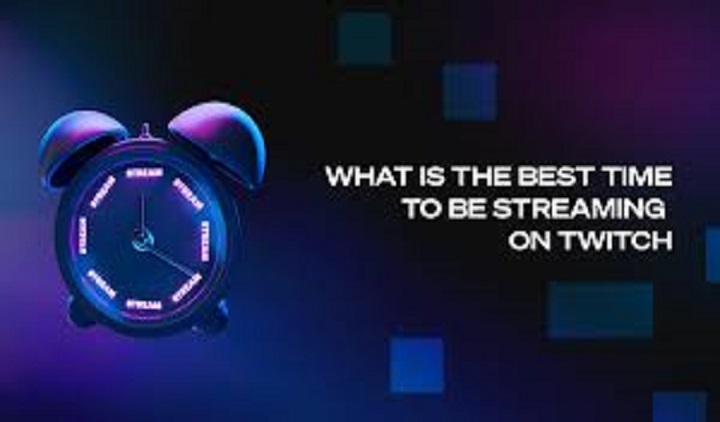Introduction: Timing Your Streaming for Maximum Enjoyment
With dozens of streaming platforms offering an overwhelming amount of content, one question often goes unasked: when is the best time to stream? Timing isn’t just about convenience—it affects streaming quality, availability of new releases, and even your viewing satisfaction.
Whether you’re an entrepreneur catching up on entertainment after work, a business owner looking to unwind, or a marketer analyzing peak digital traffic times, understanding the best streaming windows can improve both your experience and strategy.
In this guide, we’ll break down the optimal times to stream, why it matters, and how smart timing can benefit you personally and professionally.
Why Streaming Timing Matters
Before we get into the best times, here’s why timing your streaming sessions can make a difference:
- Less Buffering: Peak hours can overload internet bandwidth and streaming servers, leading to buffering or lag.
- Higher Video Quality: Off-peak hours offer smoother playback and better resolution.
- Exclusive Drops: New content often premieres at specific times—be the first to watch.
- Personal Efficiency: Watching during your least productive hours frees up your most productive ones.
Best Times to Stream TV and Movies
1. Early Mornings (6 AM – 9 AM)
- Ideal for solo viewers, early risers, and working professionals.
- Pros: Fast internet, fewer users, peaceful environment
- Cons: Limited new releases unless timed globally
Pro Tip: Watch foreign or niche content during this time—it’s likely to stream smoothly and without competition.
2. Midday Slot
- Great for: Entrepreneurs with flexible schedules
- Advantages: Bypasses peak internet traffic, making it ideal for lunchtime viewing.
- Drawbacks: Certain platforms may reduce streaming quality during school or work hours to manage bandwidth
Pro Insight: Use this time to binge shorter episodes or documentaries—something that educates while you eat.
3. Late Night (10 PM – 2 AM)
- Great for: Night owls, creatives, solo unwinders
- Pros: Fewer users = better performance, calm viewing environment
- Cons: May disrupt sleep if not managed
Pro Insight: Use late-night viewing to explore new genres or preview the next day’s releases—many streaming services drop new content at midnight (PST).
4. Fridays at Midnight (Pacific Time)
- Best for: Watching premieres the moment they drop
- Example: Netflix, Apple TV+, Max, and Prime Video typically release new episodes or seasons at 12:00 AM PT.
Why It Works:
- Be first to watch and avoid spoilers
- Great for live tweeting or posting first reactions
- Perfectly suited for pop culture marketers and content creators.
Times to Avoid Streaming
- Evening Peak Hours (7 PM – 10 PM, particularly on weekends):
Everyone is home and watching—expect slower connections and lower resolution.
- Weekends Afternoons:
While convenient, these are high-traffic periods where buffering can occur, especially on lower-tier internet plans.
Streaming Strategy for Business Owners and Marketers
If you’re in business or content creation, here’s how timing your streaming can help:
- Stay Ahead of Trends: Watch major releases right as they drop to join conversations early.
- Plan Content Calendars: Know when platforms release content to build campaigns or reviews around them.
- Use Off-Hours Strategically: Stream during non-peak times to improve focus during work hours and unwind productively after.
How to Know When to Stream by Platform
| Platform | Best Time to Stream | Notable Release Time (PST) |
| Netflix | Early morning / late night | Fridays at 12:00 AM |
| Prime Video | Midday / Friday midnight | Thursdays at 12:00 AM |
| Hulu | Mid-morning / off-peak hours | Wednesdays at 12:00 AM |
| Disney+ | Before school/work (early AM) | Wednesdays at 12:00 AM |
| Apple TV+ | Late night / morning | Fridays at 12:00 AM |
| Max (HBO) | Late night on Sundays | Sundays at 9:00 PM ET |
Conclusion: Watch Smarter, Not Harder
Knowing when to stream can significantly enhance your experience. Whether you’re avoiding peak hours to enjoy better video quality, staying up for a midnight premiere, or squeezing in a lunch-break documentary, timing makes the difference between frustration and full enjoyment.
For entrepreneurs and marketers, syncing your streaming habits with your schedule and goals ensures entertainment becomes a tool for insight—not just distraction.
Also Read: Hollywood Baby Announcements 2025: All the Celebrities Expecting This Year
Also Read: Upcoming Amazon Prime Web Series in 2025: A Comprehensive Guide
FAQ: When to Stream
- What’s the best time to stream to minimize buffering?
Early mornings and late nights, when fewer people are online. - What time do new Netflix shows usually release?
Midnight Pacific Time on the day of release, typically Fridays. - Is streaming more reliable on weekdays or weekends?
Weekdays during non-peak hours (like late morning) generally provide a smoother experience. - How can I optimize my internet for better streaming?
Stream during off-peak hours, use a wired connection, and limit other devices using the network.
5. Can timing affect streaming quality on mobile?
Yes. Cellular networks experience congestion during peak hours, just like home Wi-Fi.
















